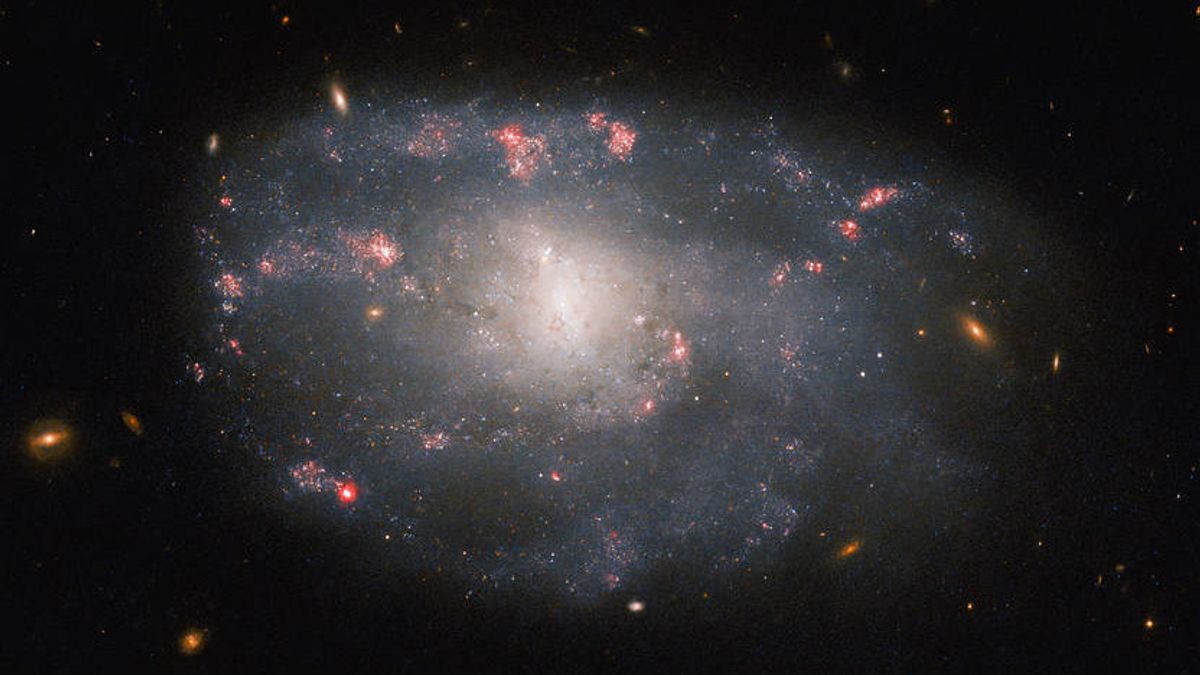JAKARTA - An irregular spiral galaxy was successfully immortalized by the Hubble Space Telescope, known as NGC 5486, combined with a clump of prominent star formation from its bright core.
This luminous galaxy is located very close to the larger Pinwheel Galaxy, touted as the grand design spiral galaxy.
NGC 5486 is located about 110 million light-years from Earth in the constellation Ursa Major and is found in a series of Hubble Telescope images under study for debris left by Type II supernovae.
This irregular galaxy is without a spiral arm or nuclear bulge structure. NASA stated, as massive stars reach their end of life, they throw away large amounts of gas and dust before ending their lives in a giant supernova explosion.
"NGC 5486 hosted a supernova in 2004, and astronomers used a sharp vision from Hubble's Advanced Camera for Surveys to explore the consequences in hopes of learning more about events," NASA said, quoted Tuesday, March 14.
Earlier this month, the Hubble Telescope also captured afertile galaxy with stellar tendentacles hanging in a concentrated darkness.
As themal galaxy moves through the intergalactic space, the gas slowly peels off forming a path resembling a culvert illuminated by a clump of star formation.
This blue culvert is seen below the core of this galaxy, making it look like aferoval. This specialferious galaxy, known as JO201, is located in the constellation Cetus, named after the sea monster from ancient Greek mythology.
Fragrant galaxies surpass the bright disks of the galactic nuclei. These special observations stem from investigations into the size, mass, and age of the clumps of star formation in the culverts of the airquake galaxies.
"Astronomers hope this will provide a better understanding of the relationship between ram-pressure stripping, the process that creates the salur offero-fungter galaxies and star formation," NASA explained.
The sea view of this galaxy was captured by Hubble's Wide Field Camera 3 (WFC3). The versatile instrument that captures images at ultraviolet, infrared, and visible wavelengths. WFC3 is a tool that presents some of Hubble's most spectacular images.
The English, Chinese, Japanese, Arabic, and French versions are automatically generated by the AI. So there may still be inaccuracies in translating, please always see Indonesian as our main language. (system supported by DigitalSiber.id)









